Mueller 4-Stage Knife Sharpener In-depth Review
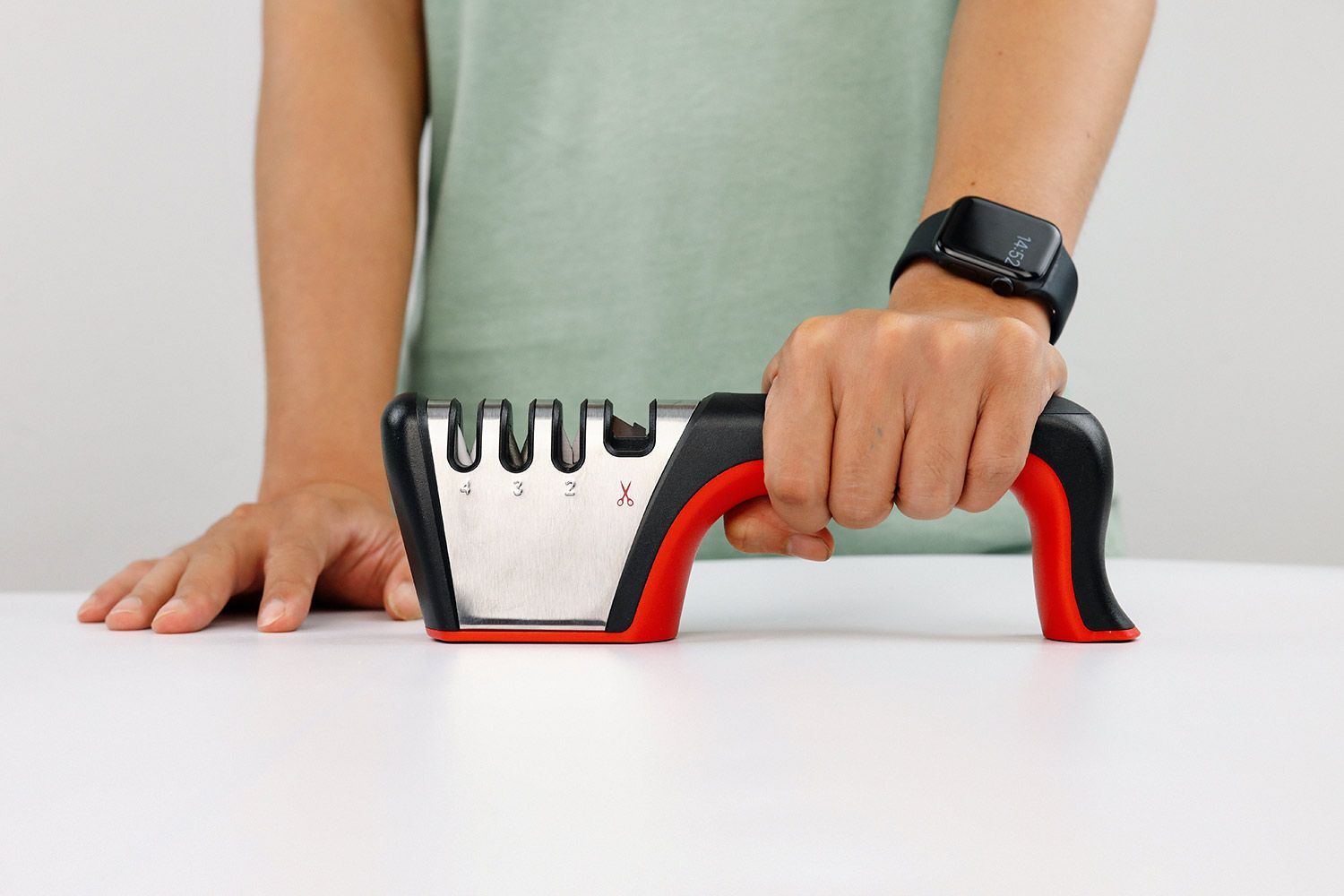
Overall Verdict
If you’re simply looking for an affordable and fuss-free sharpener that works, the Mueller KS-4ST knife sharpener may be it. It’s versatile, easy to work with, and looks like it will last a few years.
But if you take pride in keeping a delicate knife edge or plan to pass on the knife as a family heirloom, don’t let it meet the Mueller. This sharpener can peel off the blade to the spine, and at the same time, trigger your OCD with the uneven edge it creates.
Things We Like
- Strong construction, pretty coloring
- Quick sharpening
- Scissor slot
- Ease of use
Things We Don’t Like
- High center of gravity
- Harsh on the knife edge
We didn’t have high hopes for the Mueller KS-4ST knife sharpener when we saw it on Amazon: Not only does it have a tall body, which we have found is detrimental to balance, but its slot layout is also different from most other pull-through sharpeners (apart from the Longzon, which is basically its twin product). However, it had garnered many positive reviews online, and we figured the affordable price couldn’t be the only incentive.
So we bought it to test out in our lab. Here, we discuss our experience with it.
6.7 Performance
It won’t make your knife razor-sharp, but the Mueller takes little time getting a dull edge ready for common cutting tasks in the kitchen. Contrary to its twin, the Longzon, however, it eats away the blade and leaves a rough, uneven edge.
8.8 Sharpening Time to Cut a Lemon
The Mueller isn’t the speediest of sharpeners, but it works fast enough. We put it through the lemon test twice, and it took 60 and 90 seconds respectively to complete the task. This is quite a reasonable time range, considering how dull we made the knife before testing.
Skipping the diamond rods won’t affect the result. We only used them to rid the knife edge of metal particles and make sure it was as smooth as it could be, but if you’re in a hurry, the ceramic rods alone would suffice.
8.0 Maximum Sharpness Achieved
After 5 minutes on Slot 2 and 30 seconds on each of the remaining slots, our test knife was able to cut through a raw chicken breast with the skin still attached. It did need a second swipe to sever the tough, slippery fat and skin, but this is the case for most devices.
5.0 Material Retention
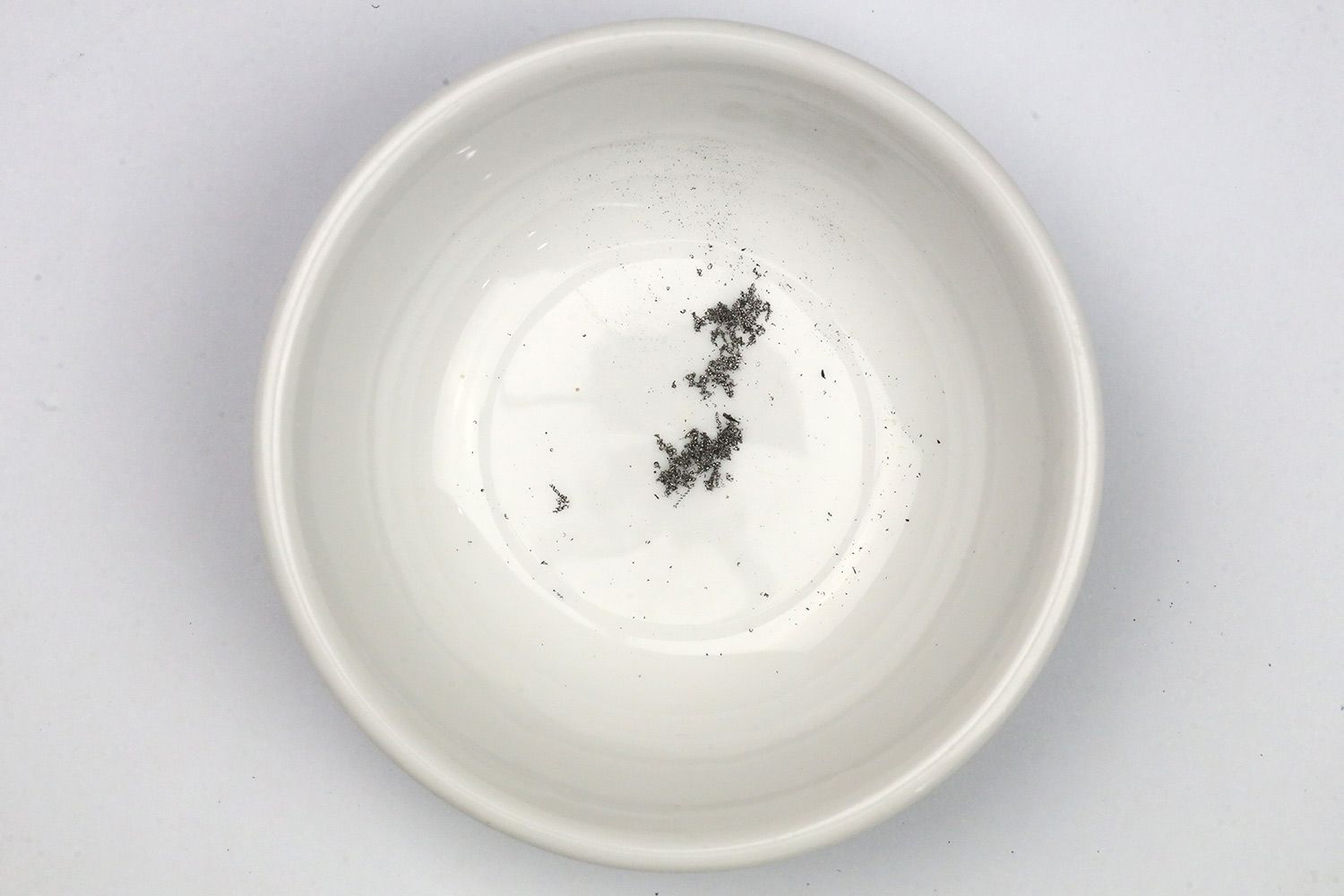


The Mueller is a disappointment when it comes to preserving edge integrity. We were horrified at the size and amount of swarf the sharpener churned out after every swipe on the tungsten carbide blades. It’s all or nothing with this slot: When it works, it shaves off as much metal as it can. When it doesn’t, your knife simply glides through it, untouched.
The icing on the cake is the obvious unevenness on the two sides of the edge. We can’t quite work out the reason for this, because its sharpening slots look exactly the same as the Longzon, which created a very nice edge in our test. We re-edged the test knife and tried again, and even replaced the test knife in case it was a faulty one, but the end result was the same.
4.0 Edge Smoothness

The diamond dust and ceramic rods didn’t seem to do much if anything to smoothen the edge: It came out rough with waves and small chips all across its length. I could see it with my naked eyes and feel the chips and small particles as I ran my fingers along the edge. The discrepancy between the two sides just tops it off.
9.1 Design
Despite its affordable price, the Muller 4-stage sharpener has a strong, solid build, substantial abrasives, and tightly-fitting parts. It has a nice fit and finish and a spacious grip that’s comfortable to the touch. However, a lower working section would offer better control and stability.
In the Box
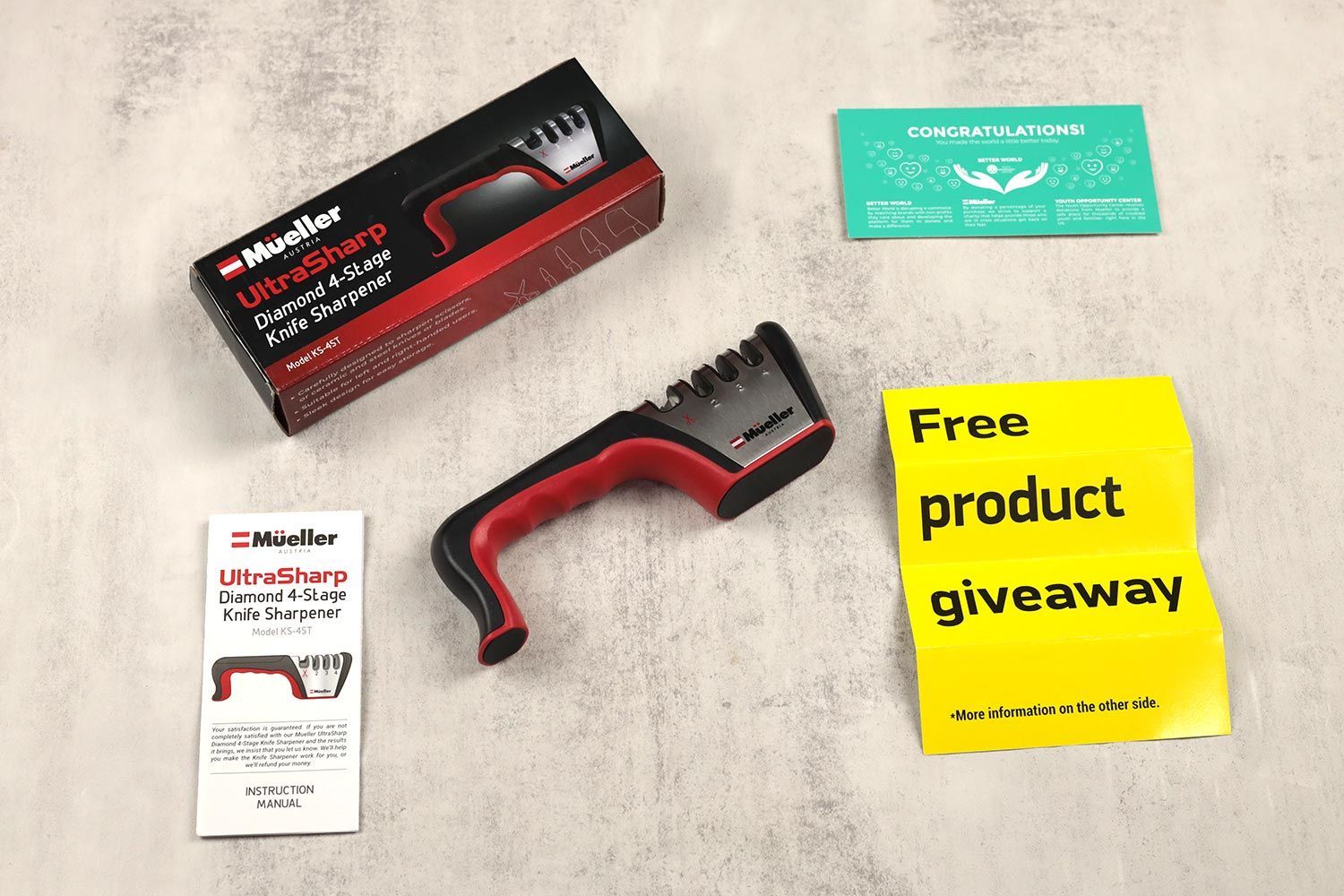
- The Mueller 4-stage knife sharpener
- Instruction manual
- Appreciation card & promotional leaflet
The Muller KS-4ST knife sharpener comes in a nice cardboard box. Included is a detailed user guide with safety notes and instructions on how to sharpen knives of different dullness levels.
Dimensions
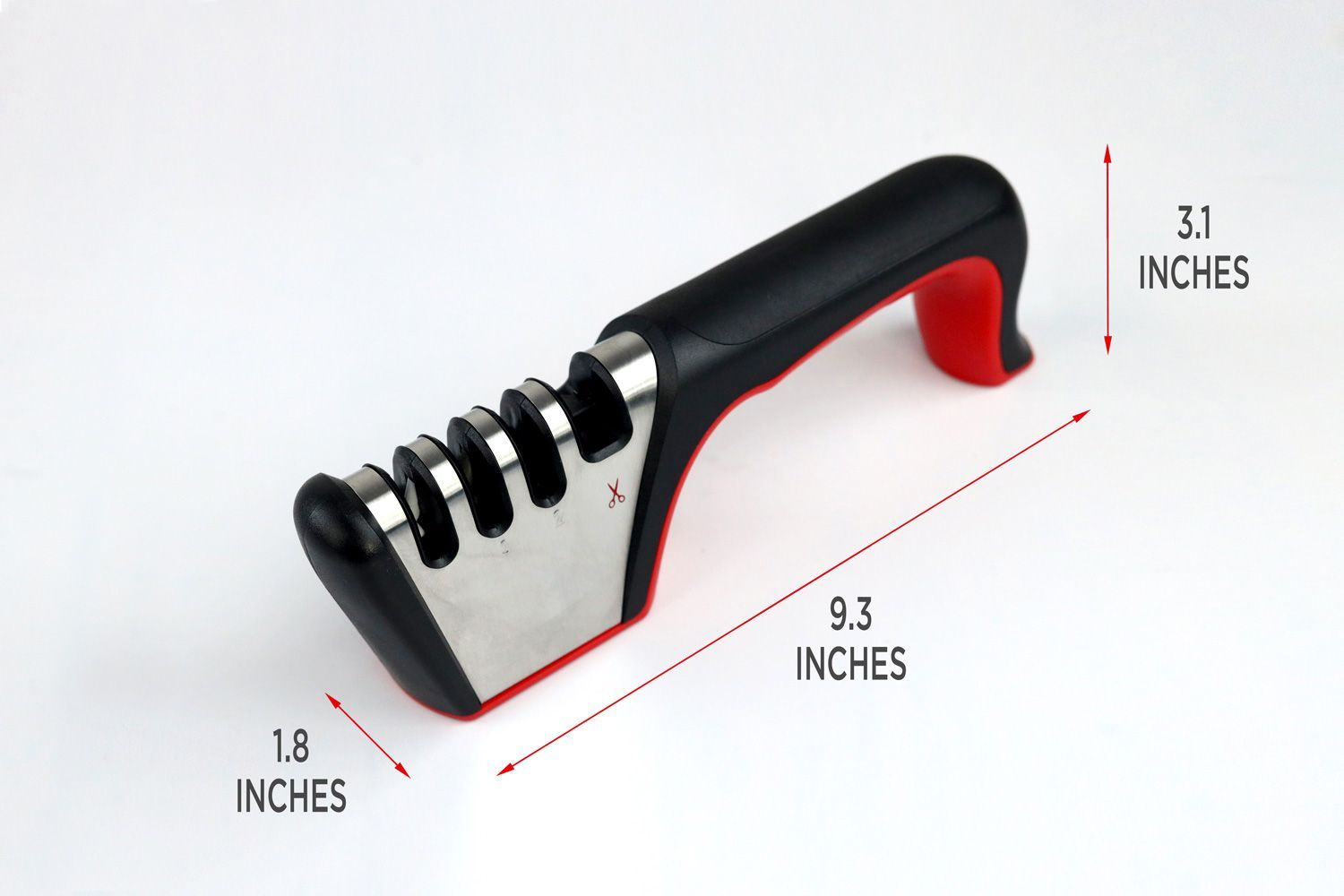
9.1 Build Quality
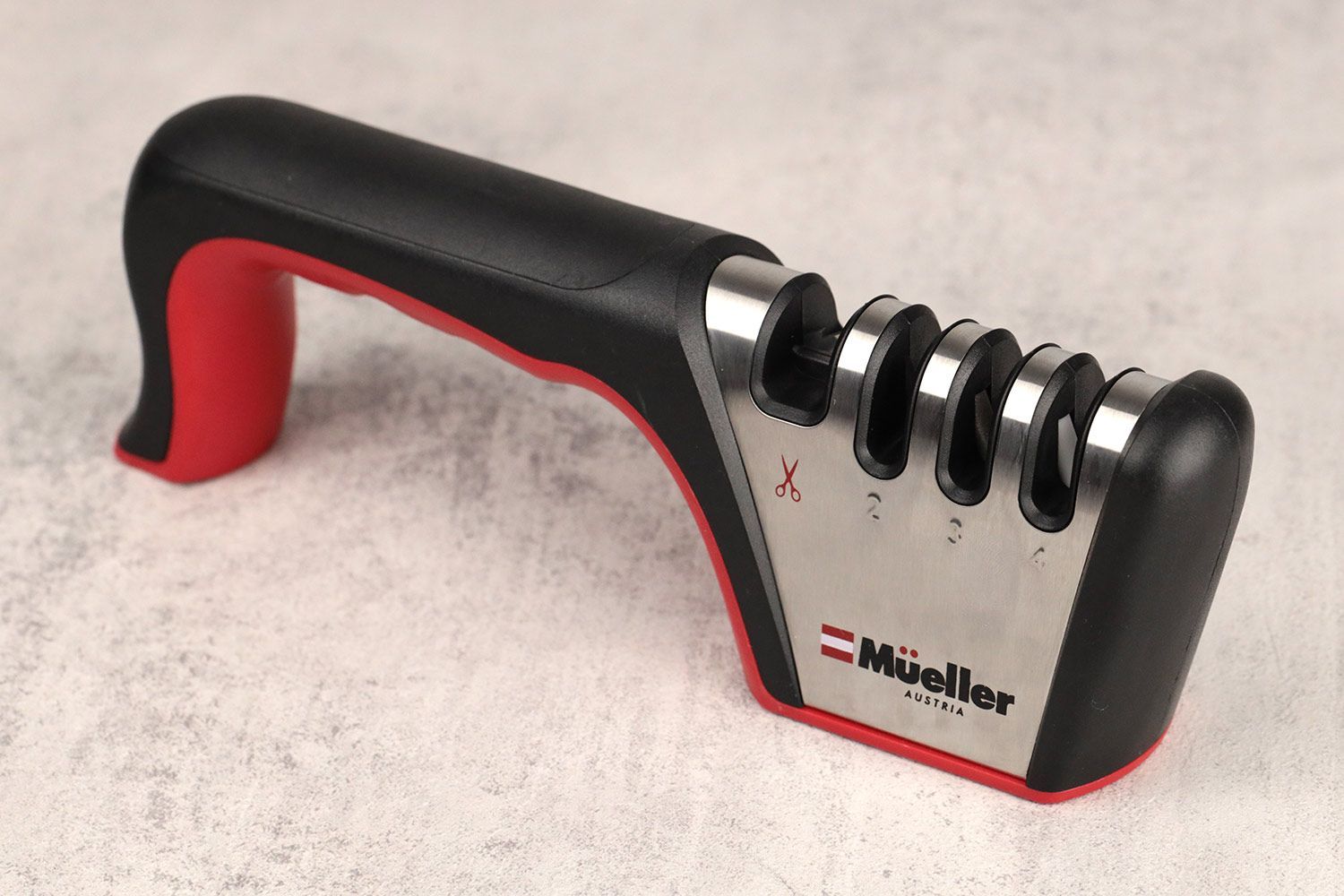
The Muller sharpener appears to be made from decent-quality materials. There’s also little to complain about regarding the construction: Its parts align well and even when we dropped the device on the floor they stayed together like a one-piece tool. We don’t like its high center of gravity and prefer a more weighted base, but at the same time, we can’t deny how well it was put together.
9.0 Grip

The Muller has a grip that’s proportional to its wide working section. It offers lots of space for those with large hands, and there are finger nubs that make it easy to hold on to. We also appreciate the rubber padding on the upper side of the grip: It’s soft and gentle to your palm while also creating useful friction against grease or moisture.
Working Section
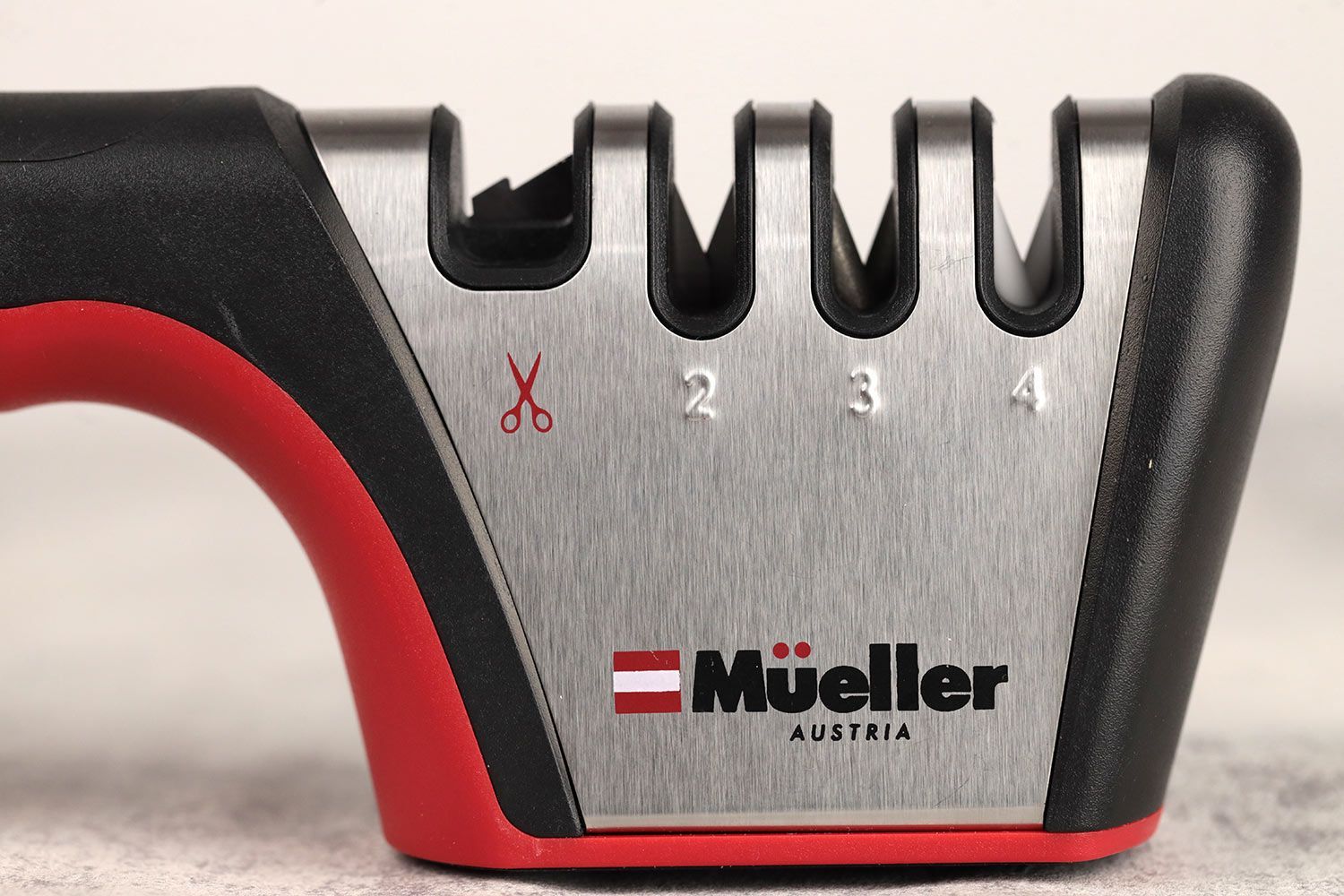

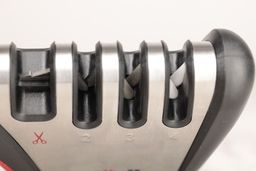
The Muller has a large working section with one slot for scissors and three for kitchen knives. It’s placed on a rather thick base — in fact, the Muller is among the tallest of all the devices we’ve tested. Unfortunately, this is not an advantage in the world of handheld sharpeners: A high working section only makes it more prone to toppling during operation.
Base
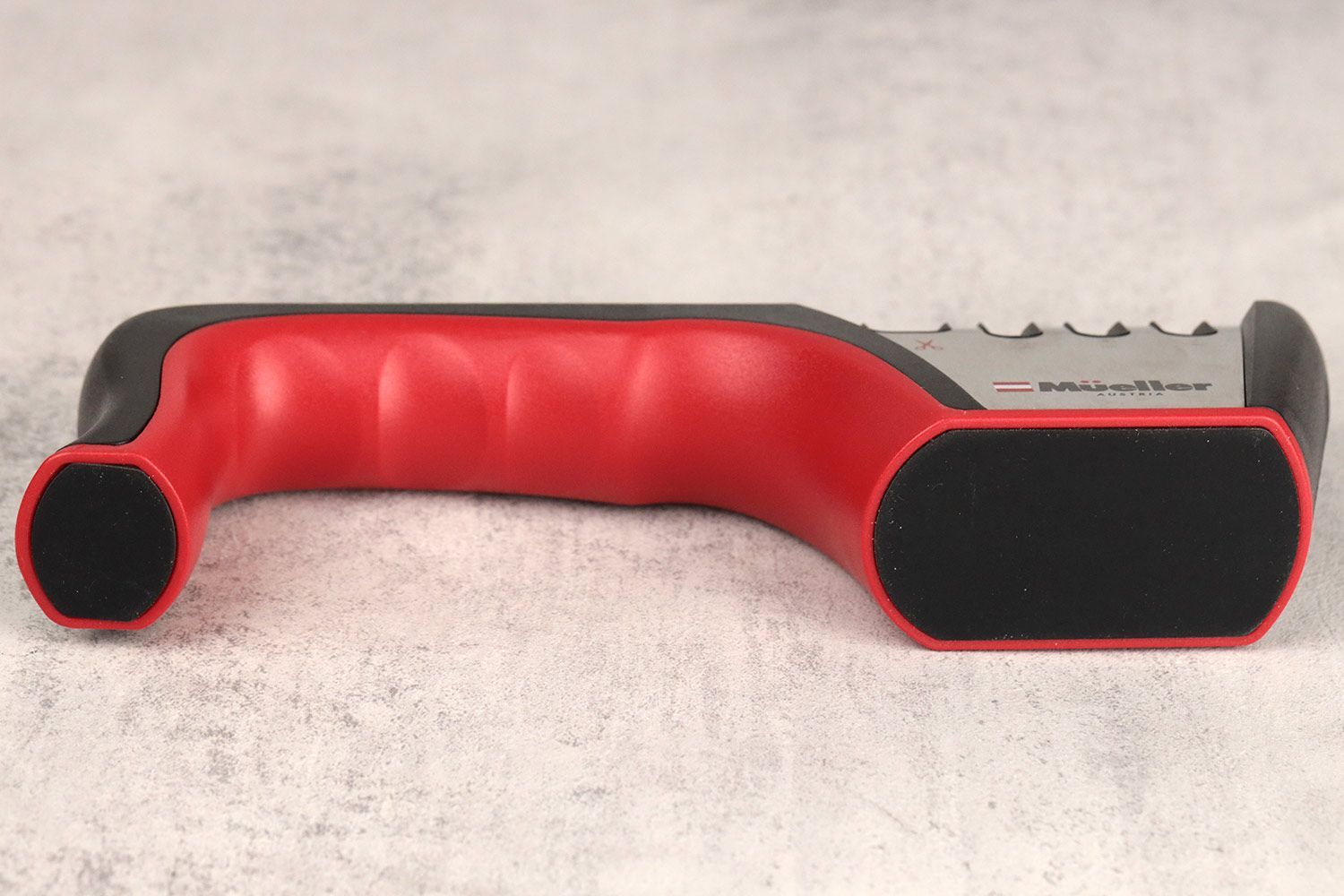
The Muller has a base running from the heel of its handle to underneath its working section. The base is supported with two flat rubber pads that offer friction and keep it from sliding across the countertop during sharpening.
8.2 Ease of Use
Though the Mueller is a bit tall, it offers decent balance and stability. Its large size and substantial abrasives give you a lot of confidence when sharpening. The slot layout could be improved, in our opinion, but it doesn’t pose much of a problem in terms of usability.
7.0 Slot Arrangement
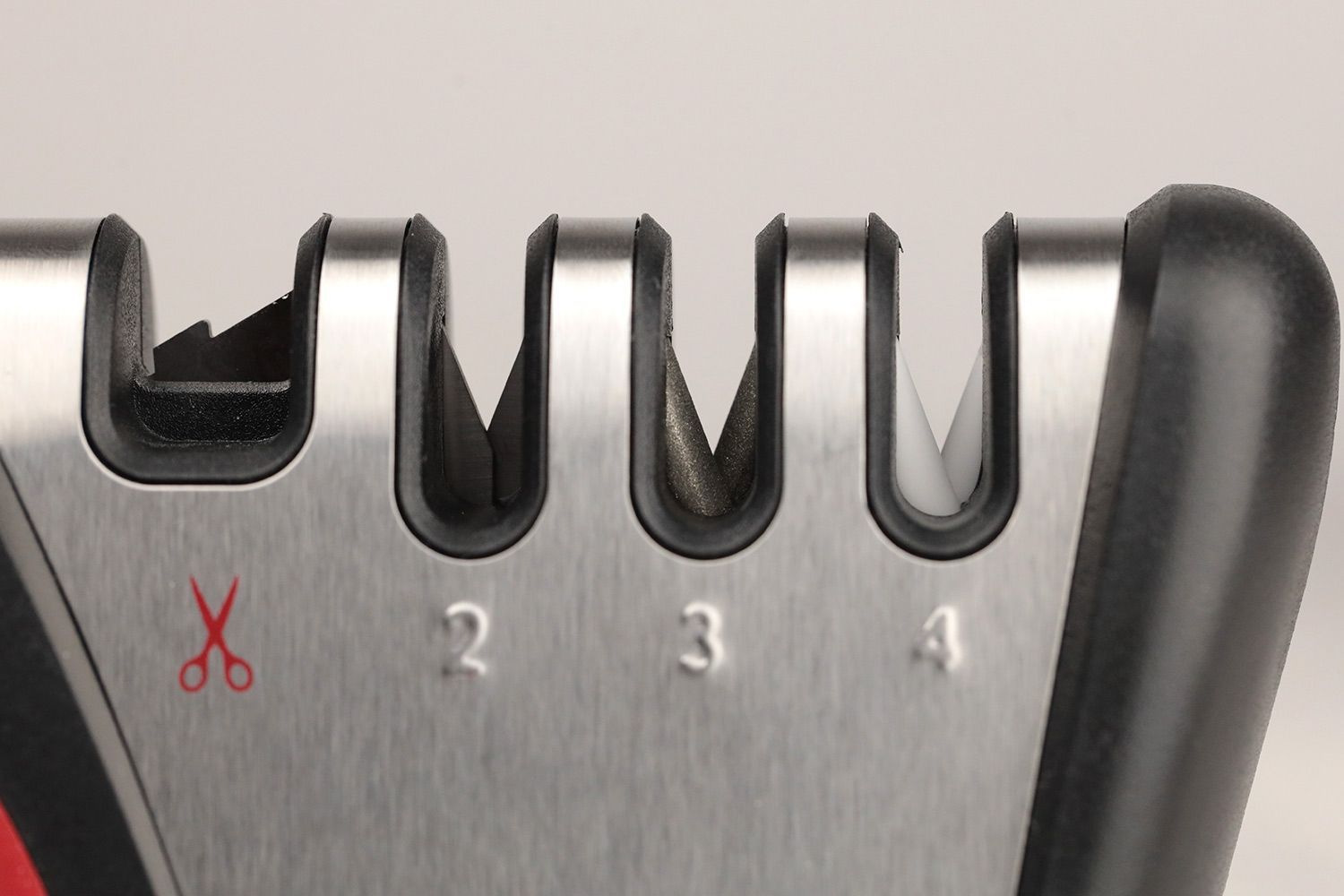
Unlike many other sharpeners where the diamond rods serve as a “prep” stage, on the Mueller, you start sharpening your knife with the tungsten carbide blades (Slot 2), then move on to the diamond rods (Slot 3) and finish on the ceramic rods (Slot 4). Interestingly, in the Amazon product description, slots 2 and 3 are swapped.
The tungsten carbide blades remove the most material from the knife, so it makes sense that they’re the ‘coarsest’ stage. However, we found that the diamond and ceramic rods may sometimes dullen a keen edge, especially when you use both of them to ‘polish’ it. As a result, we prefer the more common setting of starting with the diamond rods for the straightening effect.
9.0 Insertion
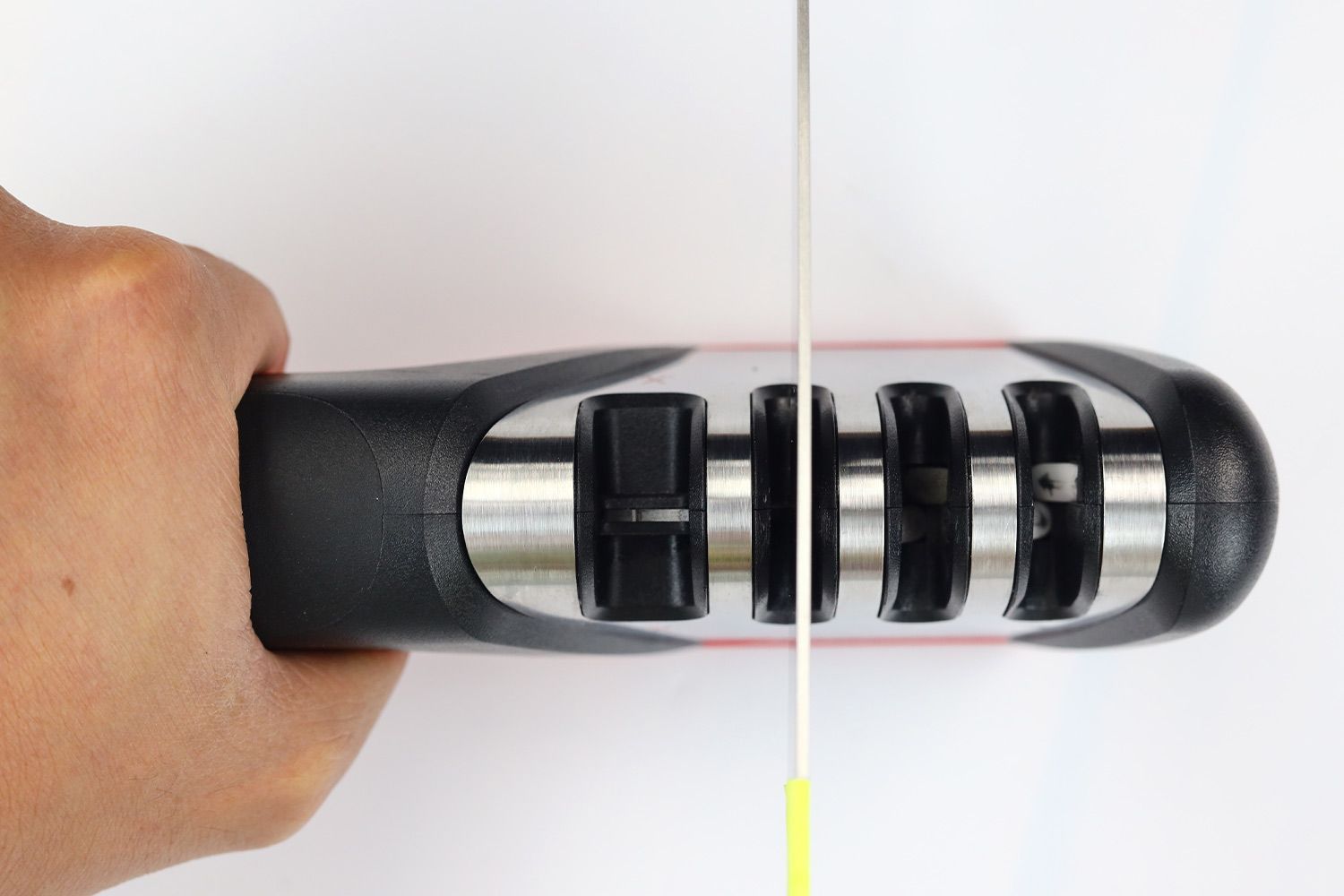
With a long grip and a wide working section, blade insertion into the sharpening slots was effortless and didn’t require much caution. If you’ve been sharpening with mini-size devices such as the KitchenIQ, where you’re gripping right next to the sharpening slot, you will likely notice the lack of stress when working with the Mueller.
7.5 Pulling Through

The test knife went through the last two sharpening slots with little problem. However, our experience with the coarse slot seemed to be hit-and-miss: Sometimes, the tungsten carbide blades were almost slippery with no friction or pressure felt, which means they weren’t doing their job. Other times, they were tight and ended up removing too much material from the knife.
8.5 Stability on a Clean Surface
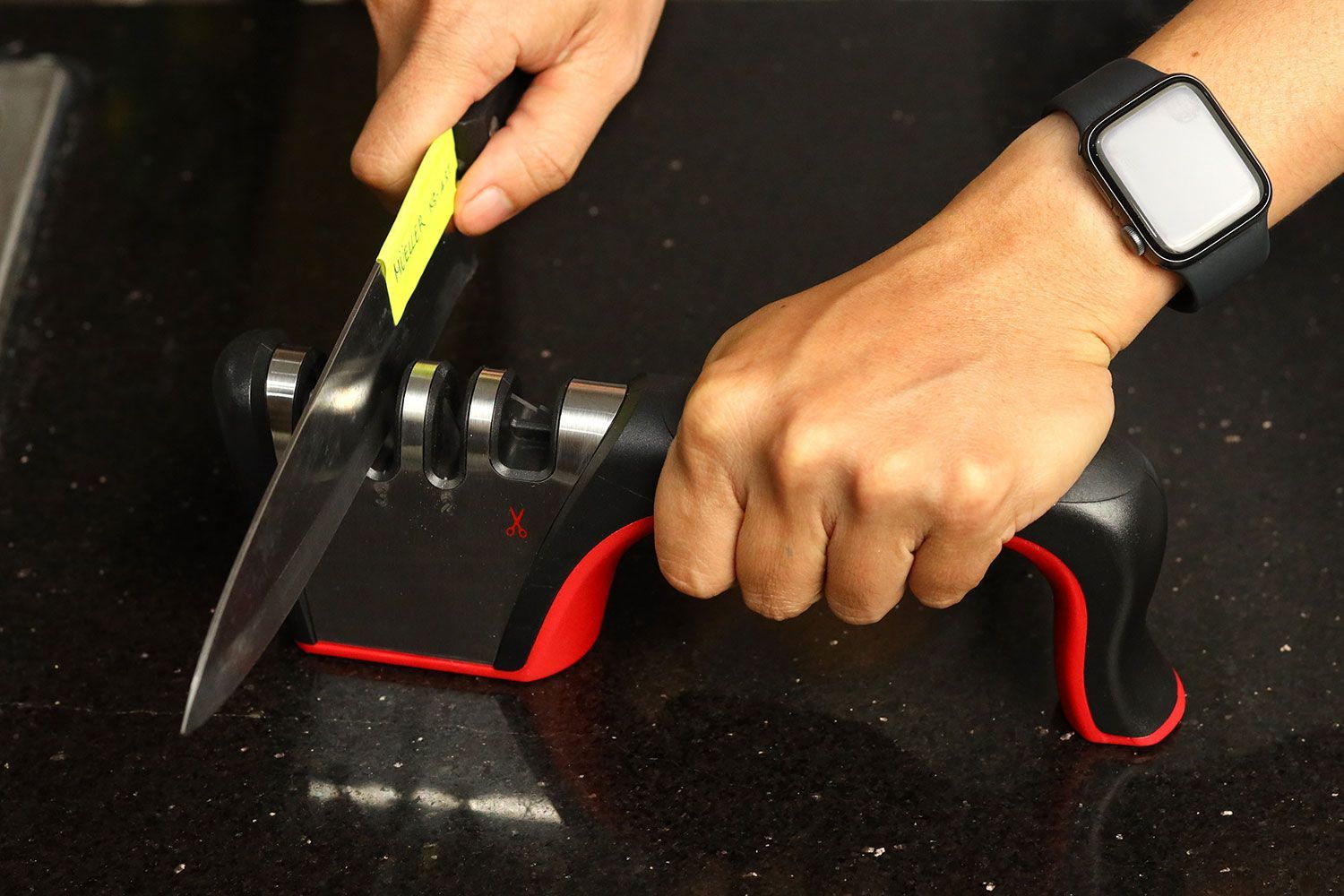
The Muller keeps its balance well on a dry and clean wooden table or marble countertop. It’s taller than most devices, but thanks to the flat and frictious base, we never had to use excessive force to keep it in place during our multiple tests.
8.0 Stability on a Wet and Dirty Surface
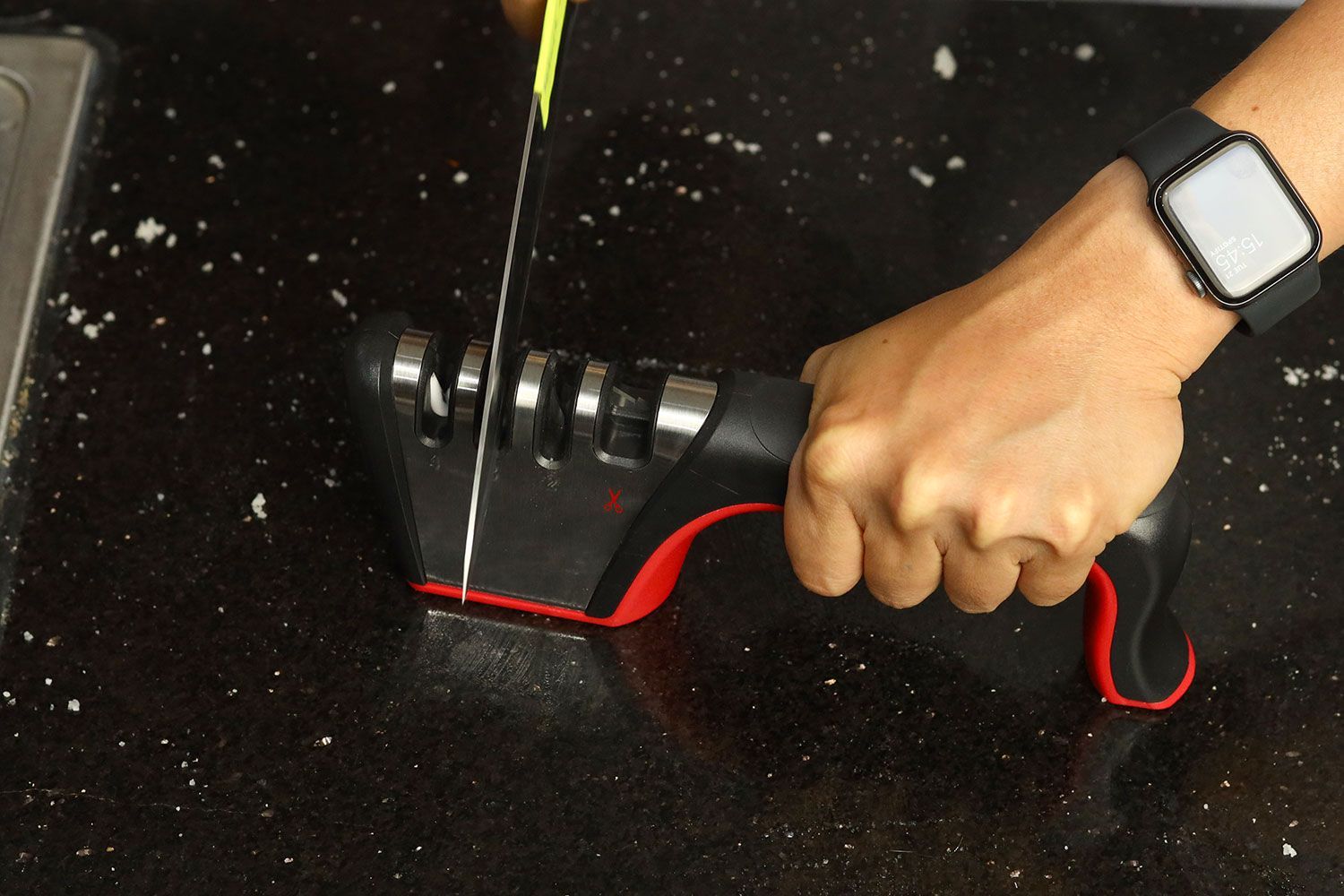
We had to be a little more cautious on a messy slippery countertop, but as long as you don’t work too fast, balance and stability won’t be an issue.